
When you start playing Dark Deity, the new Switch SRPG from developer Sword & Axe LLC and publisher Freedom Games, you don’t really have a good grasp on what you’re getting into. The visuals are a bit less polished than they could be, the backgrounds are static, and wait…what’s that? You’re working for a mad king bent on mindless revenge for personal gain? And I’m a military academy student drafted before being properly trained? Well, that’s different.
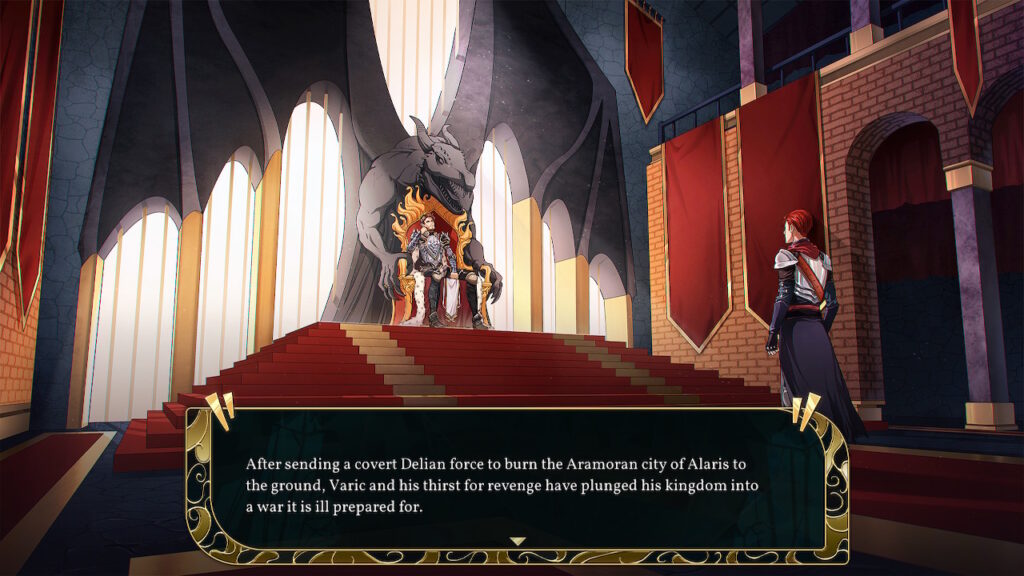
In fact, the plot of Dark Deity is surprisingly interesting, not only for its unique take on the fantasy genre, breaking tropes and shifting traditional thinking, but also because the script is fairly well written. Sure, there’s modern slang and some tongue-in-cheek comedy, but it’s a darn sight better than some of the weird language we saw in stuff like Octopath Traveler (which is brilliant, don’t hate me, but some of the script was weird). In fact, if the presentation had a bit more flair and the writers had a hair more oversight, Dark Deity might be destined to be a classic!
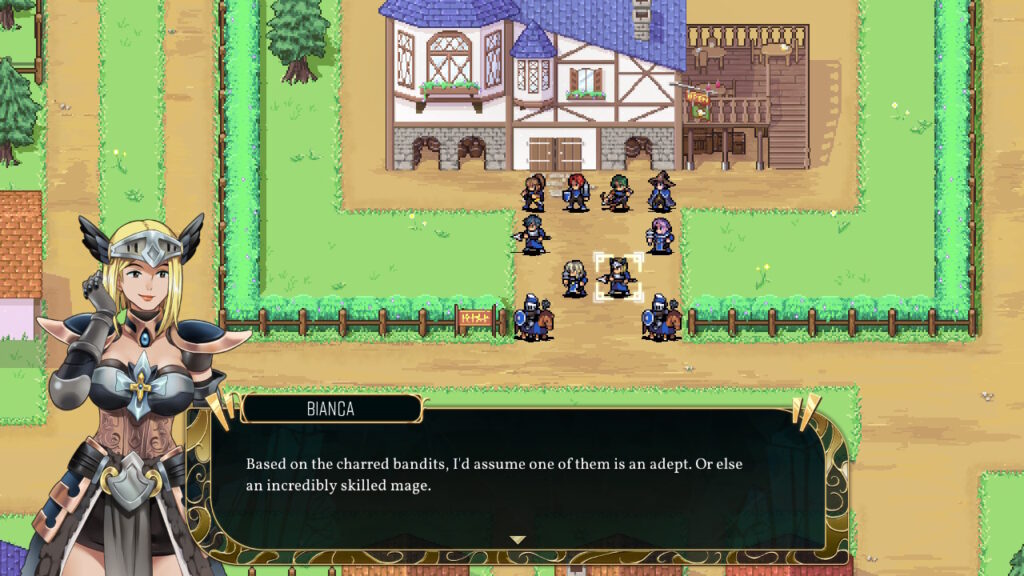
But you’re here for the SRPG gameplay, aren’t you? Well, that is what Dark Deity has in spades! This is traditional square grid turn-based tactical combat at its finest, with a variety of units, interesting enemies, vintage-style animations, and more than a bit of challenge. You can’t just walk in blindly either. Carefully considering your options is the only way to succeed in Dark Deity, as the enemies will have you for lunch with a misstep!

As is standard with these types of games, you select a unit and see their available movement. Move them within range of an enemy to attack (1 square away or diagonally for ranged attackers of course). What’s immediately different here is that you can see the damage you’re likely to do and unless you miss entirely, which you can occasionally do, the damage counter is accurate. This allows for detailed planning and test placement in order to maximize troop effectiveness. Even so, if you move too close to the wrong enemies with the wrong units, you’ll quickly be overrun and eliminated.
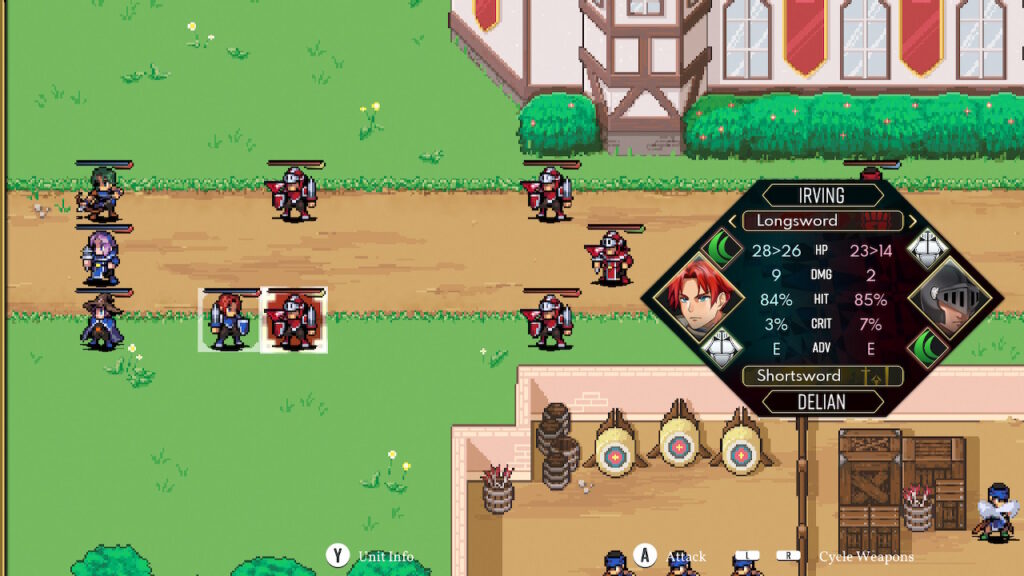
There are a variety of different character type interactions as well, so be aware who is attacking who. Heavily armored foes are weak against magic for example and bowmen slaughter cavalry, much as you’d expect. Clerics are surprisingly powerful though, with significant mace damage and armor to protect them, making them valuable and versatile. And what about permadeath, you ask? Nope. Nothing of the sort here. However, that comes with a caveat. Characters that die during the course of a battle lose a point in a random stat or can infrequently end up with a stat zeroed out.
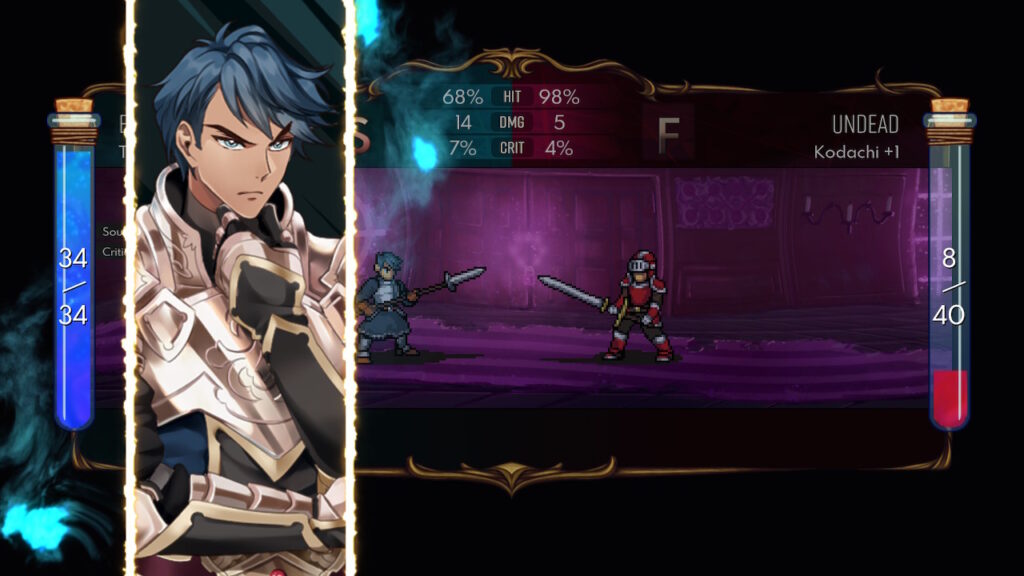
Death is not welcome in Dark Deity and dropping in stats hurts. You’ll quickly find out that there’s no way to grind your characters to balance out stats by levelling, so if you lose frequently with a character, they’re going to end up useless down the road in the game’s 28 chapters. While you’ll eventually end up with 30 playable characters, it’s still irritating not to be able to go back and use one you like. For example, as a swordsman, the main character can be easily beaten by certain classes and not using him is just weird if he gets weak enough. The game forces you to constantly check levels and make sure the kills go to the weakest allies in order to keep them in the fight. It’s a bit of a misstep to have no way to remedy this, but the gameplay is certainly fun enough that you can ignore it.
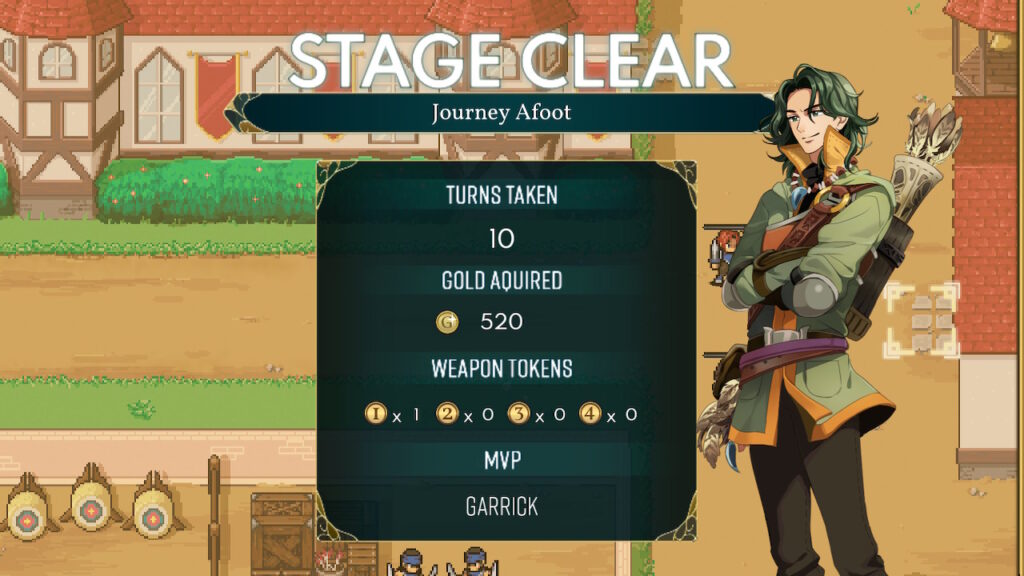
Your characters have a preset group of weapons in Dark Deity, so no wandering about looking for items or buying upgraded weaponry. Instead, you earn weapon tokens, allowing you to upgrade your characters’ abilities. You can buy tokens as well, but they’re pretty pricey. The boosts you get are worth it though, as gameplay has you walking the razor’s edge between success and death, especially without upgrades.
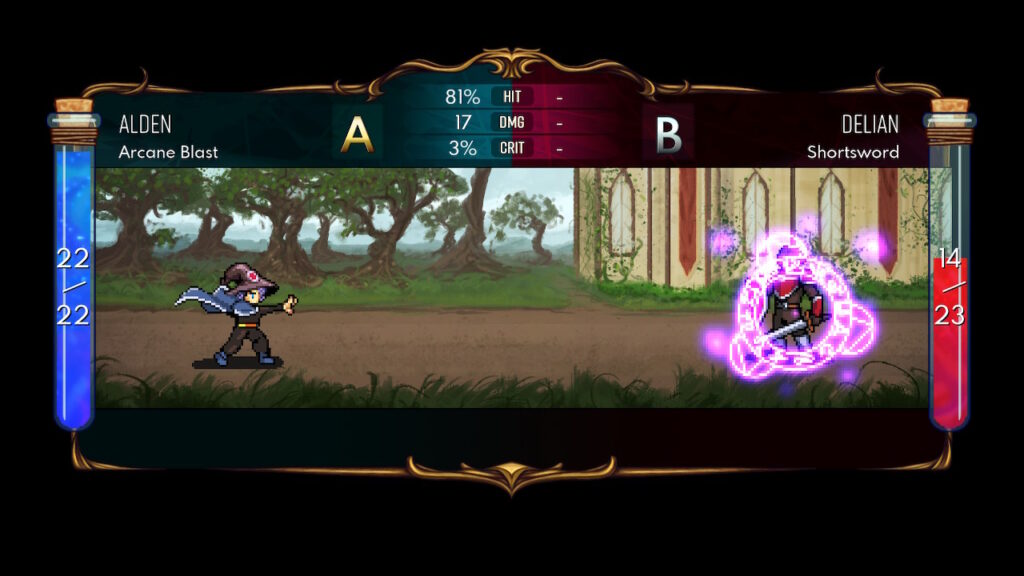
Speaking of upgrades, Dark Deity has an interesting promotion system. Each time you reach level ten with a character, you upgrade and get to choose from an assortment of characters (three at first, four in the final tier). These are disparate archetypes that allow for a variety of combat styles depending on your preferences. Unfortunately, they’re not explained very clearly and more often than not you’re simply picking the one that seems like a good idea at the time. Make sure to check what each stat does and how much it raises or lowers when picking your promotions!
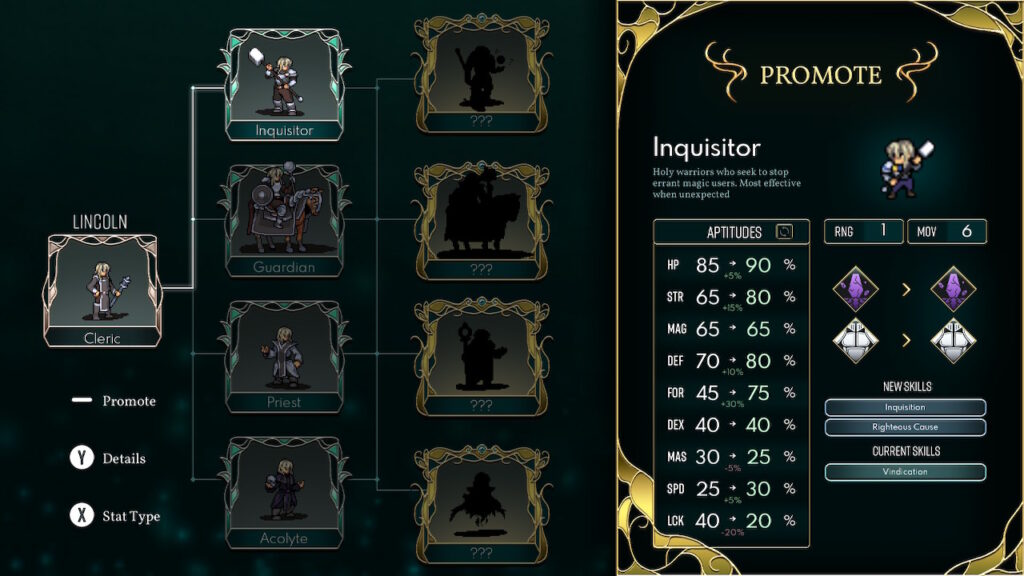
There are a few weird things with Dark Deity as well. For example, when you initially get some characters, they upgrade immediately. You haven’t used them yet but you’re picking what upgrades would be useful before you have a grasp on how the characters even play. It’s an odd choice for a narrative and lessens the impact of gaining party members. Item management could also have been done a bit better, as you have to spend some time shifting food and supplies from character to character, but this is a minor quibble.
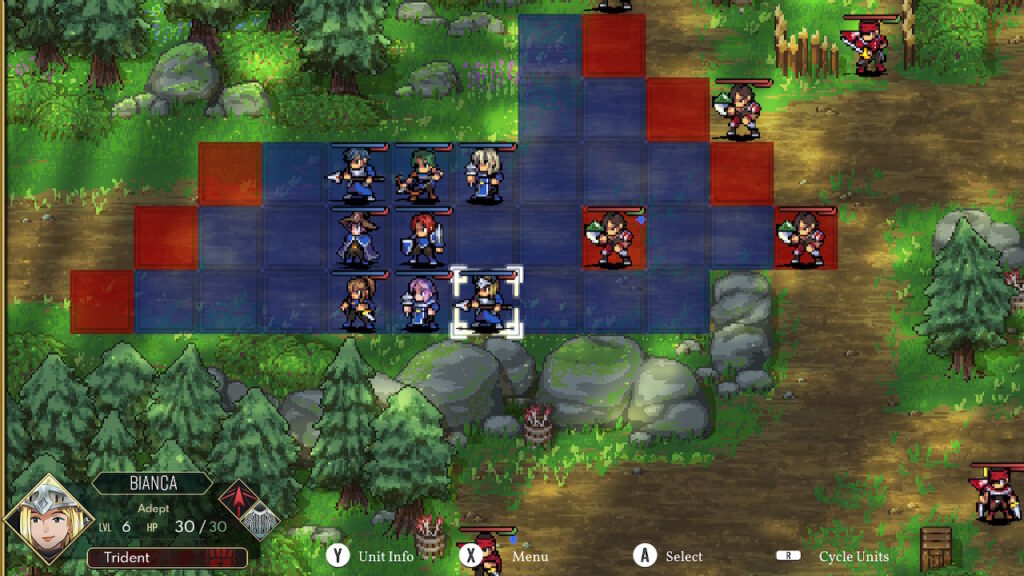
The lack of explanation of units and key combat skills makes the beginning of the game a bit of trial and error, though the lower difficulty in the first five chapters or so makes up for it. In fact, lack of explanation is prevalent throughout, with Dark Deity only glossing over key points and skipping others. How do you use the weird glowing shapes in one level? Guess you’ll have to figure it out. What do your character bonds do for you long-term? It’s not really clear.
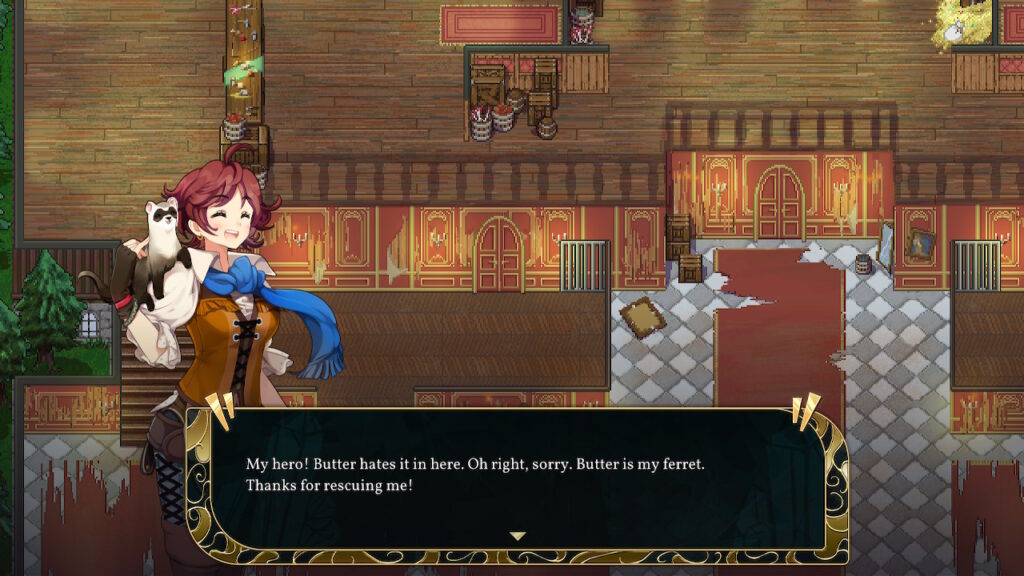
In addition to dialogue and combat, there’s a third section of the game, the base. This is where you can manage inventory, use weapon points to upgrade your characters, buy items, make character bonds, and save the game. Bonds are possibly the most tedious part of the game, where characters that have fought within three squares of each other in the previous battle have side chats in order to raise their affinity for each other. And what do those bonds do for you? Literally nothing. This is all backstory with no purpose other than to blow your spare time and flesh out the world of Dark Deity. There’s an irritating exclamation mark showing unexploited bonds between every level though, so if you’re OCD, watch out! The base is perhaps the least useful part of the game, and on top of that, it has some of the most irritating music.
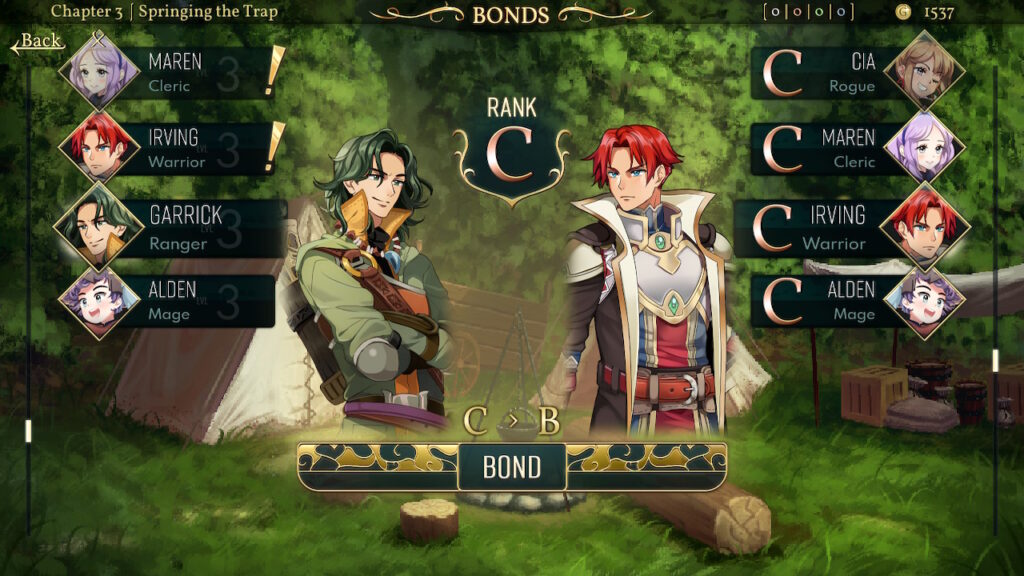
In fact, the music in Dark Deity is very much a mixed bag. Some tracks are excellent and others are just irritating. That goes for the static backgrounds too, which feel lifeless even though many are quite well-drawn. The overall visual and auditory appeal of Dark Deity is fair to middling, though the pixel art for combat sequences is outstanding, somewhat redeeming other areas of the game. It would have been nice to have slightly cleaner pixel art and some variety in the attack animations, but overall, it’s more than sufficient, bringing back memories of Shining Force and the original Langrisser games.
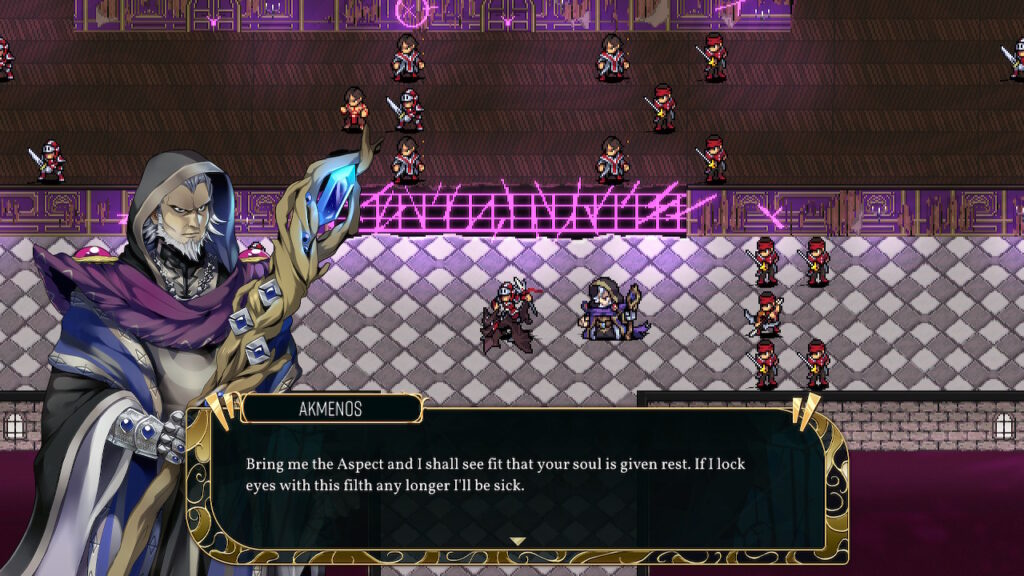
With the average battle taking about an hour or so and a plethora of chapters to work through, chances are good that you’ll get your $25 worth out of this 25+ hour game. While it might be a bit weak in some areas, the overall game is remarkably fun to play and in some ways, puts top tier titles like the recently released Triangle Strategy to shame. The vintage style, challenging combat, and interesting plot make for a solid SRPG that will have you coming back for more, and really, can you ask more than that of a game? If you’re an SRPG fan, Dark Deity is unquestionably worth your time!
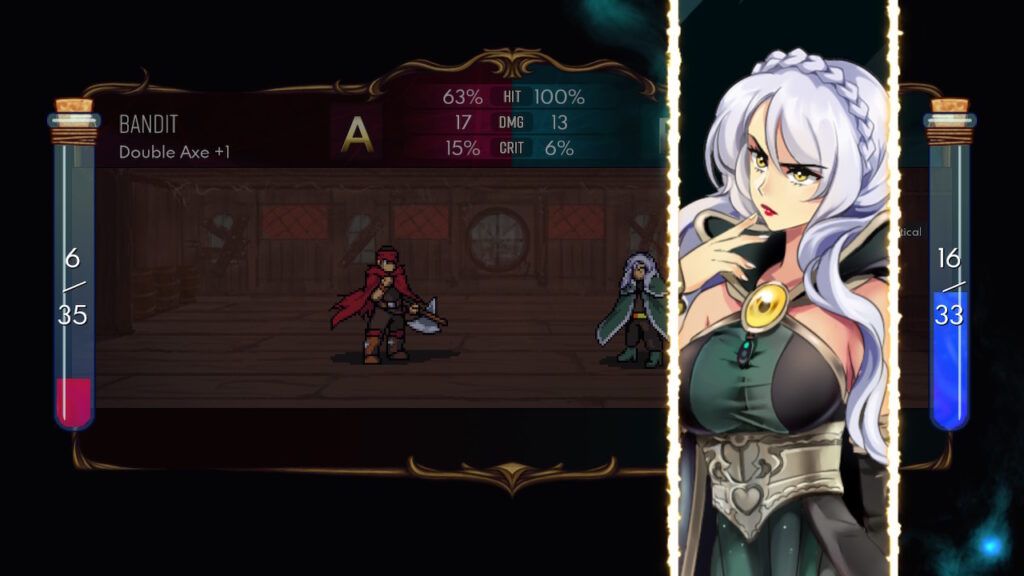
This review is based on a digital copy of Dark Deity provided by the publisher. Dark Deity is also available on PC for Steam.

